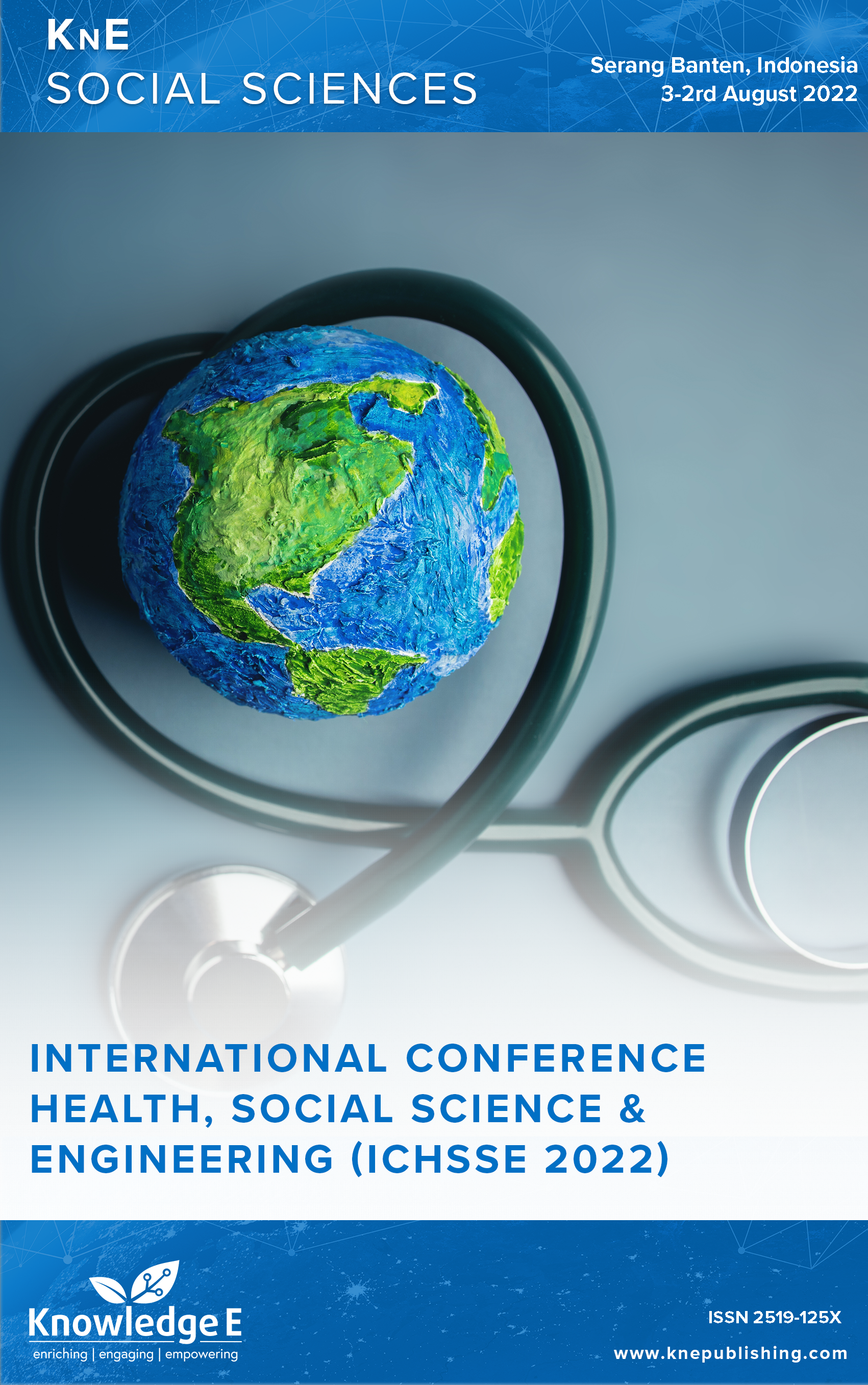Interpersonal Communication Skills of Nurse and Patient Satisfaction in Outpatient Unit
DOI:
https://doi.org/10.18502/kss.v8i14.13840Abstract
Interpersonal communication skills are one of the important things in nursing care. These skills mediate patient and nurse trust. Trust in health services is also stated as a factor that mediates patient loyalty to health services. Satisfaction is not always directly related to loyalty but its mediated by trust. This research aimed to identify a correlation between the interpersonal communication skills of nurses with the satisfaction of outpatients in hospitals. The research design used was a cross-sectional analytic design. Total 100 respondents in the outpatient unit were recruited using cluster random sampling. All instruments of interpersonal communication skills and patient satisfaction were based on validity and reliability test. Data analysis was done using Chi-square. The result showed that more than half of respondents (54%) said that the interpersonal communication skills of the nurse were good, and they were satisfied (51%). Bivariate analysis showed that there was a correlation between the interpersonal communication skills of the nurse with patient satisfaction (p < 0.001, OR 2.946). This finding recommends that the interpersonal communication skills of nurses need to be developed by training to increase patient satisfaction.
Keywords: interpersonal communication, patient satisfaction, nurse communication
References
[2] Silalahi J, Devi Fitriani A, Kesehatan Masyarakat F, Kesehatan Helvetia Medan I. “Jurnal Kesehatan Perintis (Perintis’s,” Health J. 2019;6.
[3] Syamsudin RRIHP. 1, “Gambaran Komunikasi Interpersonal Petugas Pendaftaran Pasien Terhadap Kepuasan Pelayanan di Puskesmas Karang Pule,” ARTERI : Jurnal Ilmu Kesehatan. 2019 Nov;1:14–21.
[4] Prasetyo Kusumo M. “Pengaruh Komunikasi Terapeutik Perawat Terhadap Kepuasan Pasien di Rawat Jalan RSUD Jogja.” Jurnal Medicoeticolegal dan Manajemen Rumah Sakit. 2017;6(1):72-81. 10.18196/jmmr.2016. https://doi.org/10.18196/jmmr.6130.
[5] Vicenovie Oisina Situmeang I, Ruth Situmeang I, Pascasarjana D. Ilmu Komunikasi Upi Yai Jakarta. “KOMUNIKASI DOKTER YANG BERPUSAT PADA PASIEN DI MASA PANDEMI.” Jurnal Ilmu Komunikasi. 2021;4(1).
[6] Alavi K, Mahbob MH. Komunikasi berkesan dengan warga emas: dari perspektif intervensi kerja sosial. Jurnal Komunikasi: Malaysian J Commun. 2017;33(4):21–37.
[7] Kannan S, Avudaiappan S, Annamalai M. Patients’ satisfaction with nursing care quality in medical wards at selected hospital in Chennai, South India. Iran J Nurs Midwifery Res. 2020 Nov;25(6):471–475.
[8] Malik Iskandar A, Halim H, Rezki M, Kesehatan P, Kebidanan dan Keperawatan F, Mega Rezki U. “Komunikasi Interpersonal Tenaga Keperawatan Dengan Tingkat Kepuasan Pasien.”
[9] Nursalam. “Metodologi penelitian Ilmu keperawata.” 2020.
[10] Arifin MY. Lestari STIKES Muhammadiyah Pekajangan Pekalongan, J. Ambokembang No, and K. Pekalongan: Tingkat Kepuasan Pasien Rawat Inap Terhadap Pelayanan Keperawatan; 2013.
[11] Hariyanti T, Widayanti EL. “Hubungan Keterlambatan Kedatangan Dokter terhadap Kepuasan Pasien di Instalasi Rawat Jalan Doctors’ Delays on Arrival to Patient Satisfaction Relationship in Outpatient Units.”
[12] Efendi Y, Swastikarini S, Muzawi R, Rizki A. “Aplikasi Survey Kepuasan Pasien Terhadap Pelayanan Perawat Berbasis Mobile.” 2020.
[13] Hajjul Kamil. “Patient satisfaction level on health care quality service in RSUDZA Banda Aceh.” Idea Nurs J. 2020;III(1).
[14] Prayudha IP, Sudarma M, Swamardika IB. Review Literatur Tentang Analisis Kepuasan Layanan Menggunakan Pendekatan Servqual dan IPA. Majalah Ilmiah Teknologi Elektro. 2021 Dec;20(2):203.
[15] Tanveer F, Shahid S, Mansoor Hafeez M, Khan DG, Cantt W. “Impact of doctor’s interpersonal communication skill on patient’s satisfaction level.” [Online]. Available: https://www.researchgate.net/publication/325603811
[16] Parasuraman A, Zeithaml VA, Berry LL. A conceptual model of service quality and its implications for future research. J Mark. 1985;49(4):41–50.

